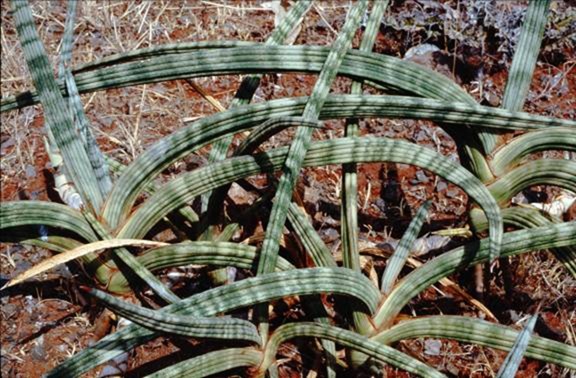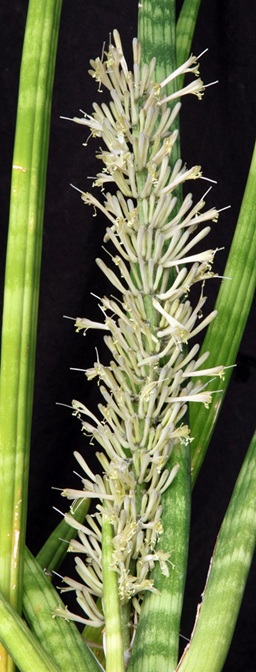| Protologue: |
Cactus and Succulent Journal (Los Angeles) 72: 224 (2000). |
| Subgenus: |
Sansevieria |
| Group: |
Sansevieria suffruticosa |
| Etymology: |
The epithet means beautiful, in reference to the banding on the leaves, which does not fade with age. |
| Distribution: |
This species occurs in southwestern Kenya, and its distribution extends southwards into Tanzania. |
| Brief Description: |
An acaulescent species with stolons, these plants branch freely above ground with the stolons either spreading or ascending to create clumps. The leaves number up to 8 and have a maximum length of about 70 and are about 12 cm in diameter with a sharp red-brown tip. They are ±distichous, ascending, cylindrical, and very rough. Each leaf has a channel on the upper face from the base to about a quarter of their length and have distinctive dark and light green transverse bands and darker green narrow longitudinal lines. The margins of the channel have a red-brown line and a narrow colorless flange. The inflorescence is about 60 cm tall and simple with up to 7 flowers per cluster. |
| Similar Species: |
Sansevieria bella is a larger species in the Sansevieria suffruticosa group. It is possible that it can be merged with Sansevieria suffructicosa, become a subspecies, or be left as a distinct species. A plant distributed as Sansevieria sp. aff. bella, originally collected from northeastern Tanzania, is unlikely related to this species and more likely a large form of S. ballyi. |
| |
| |

Sansevieria bella in habitat west of Narok, Kenya.
|
| |

Sansevieria bella (Newton 3945) flowering in cultivation.
|

